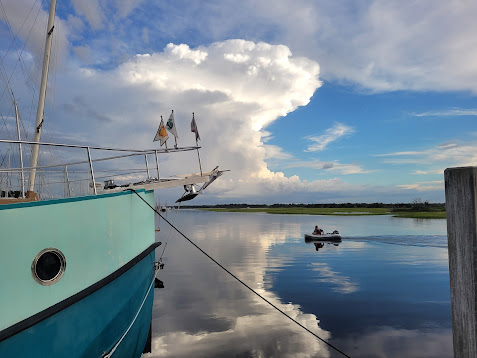We warned you; this won't always be a highbrow blog. Today, we're following up on that threat. But can you really resist manatee farts?
This has been a seriously wet week in Brunswick. Like clockwork, at 3:30, we're deluged. We've been hiding below but the dog's bladder doesn't really care about the weather. As soon as the rain lightens up a bit, it's time for a walk. Usually we get it done and get back to the safety of the boat, but yesterday we found a reason to stay out in the thunder and lightning -- manatees. Not one but two manatees, and we were thrilled to get a chance to see them grazing along the high tide line. It's not something you see everyday!
Manatees are well-known for their preference for sea grass. That's all well and good in Florida, where sea grass is abundant (at least until recently). Here in Georgia, there's not a blade of sea grass to be found. Coastal waters here are much too turbid, preventing the sun from reaching the sea floor. Yet we've seen manatees here during the warm months, begging the question -- just what are they eating?
At least some of their diet comes from terrestrial plants. Yesterday's tide was particularly high, due to the approaching full moon. These manatees were taking advantage of the high tide to enjoy plants along the water's edge:
Don't tell us we don't know our manatee farts on Fulmar.
 |
| Another storm rolling in over the Georgia-Florida line. |
No comments:
Post a Comment